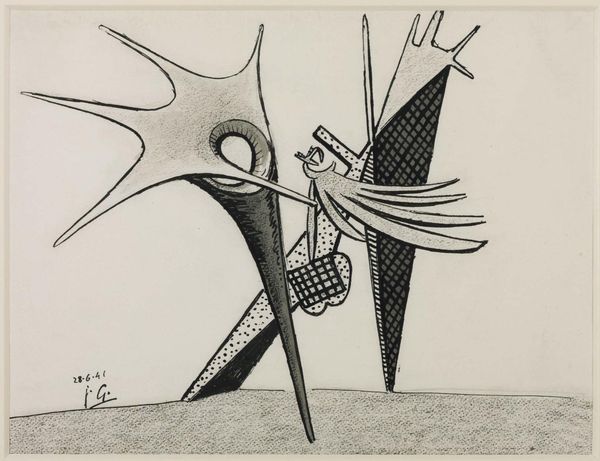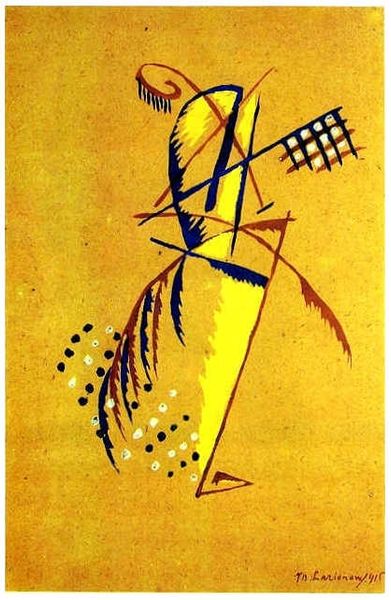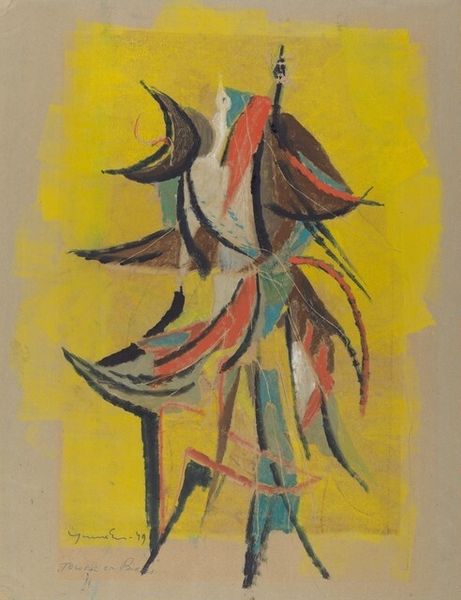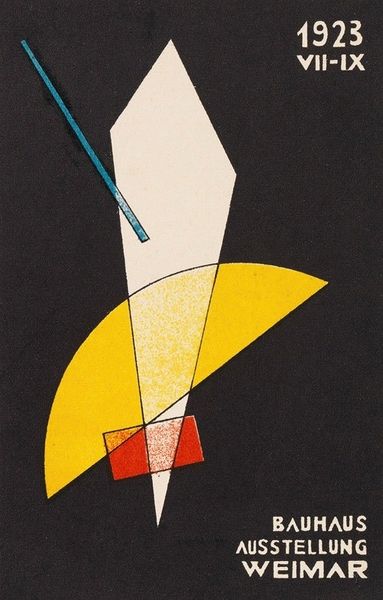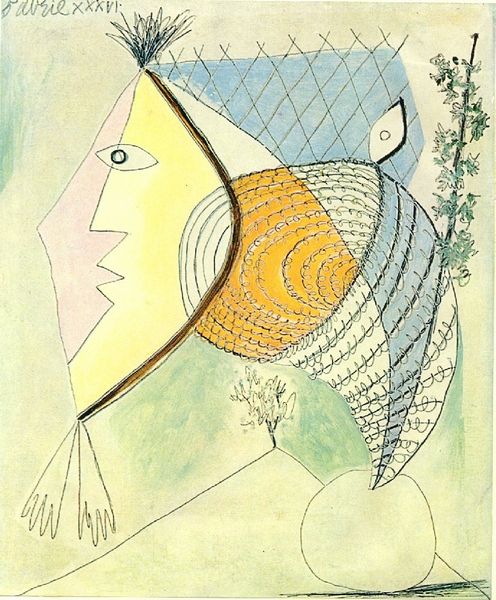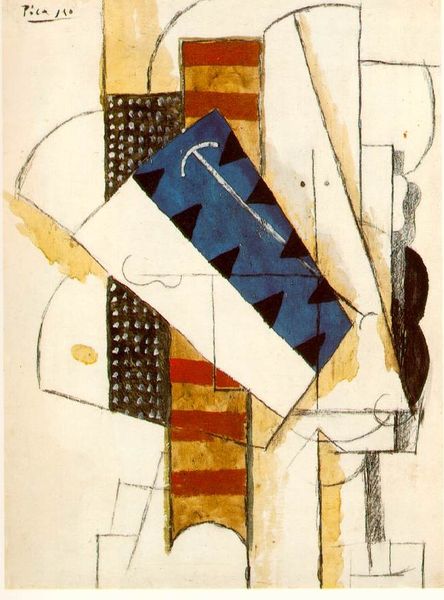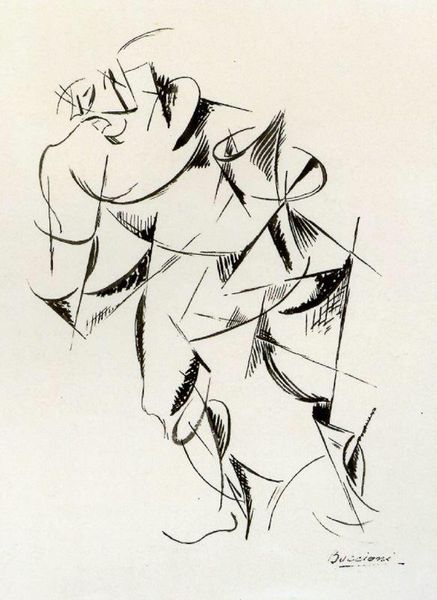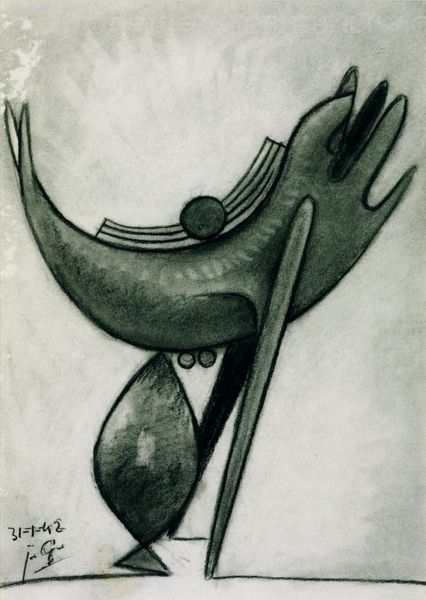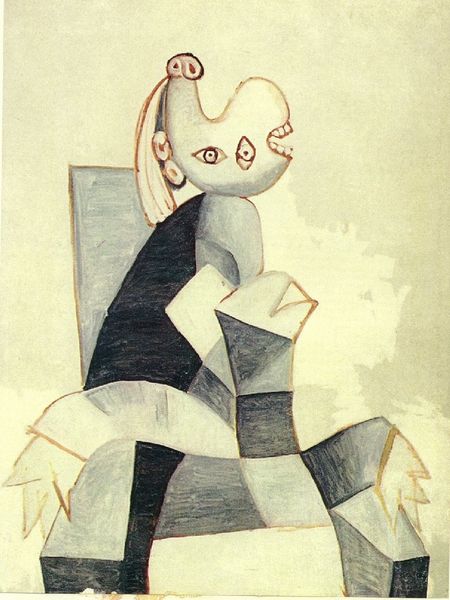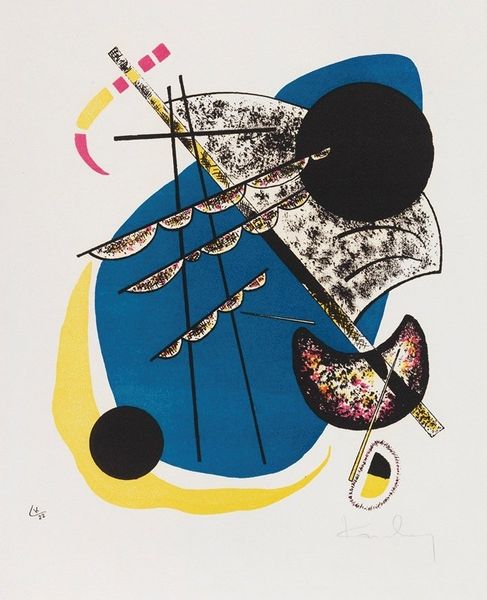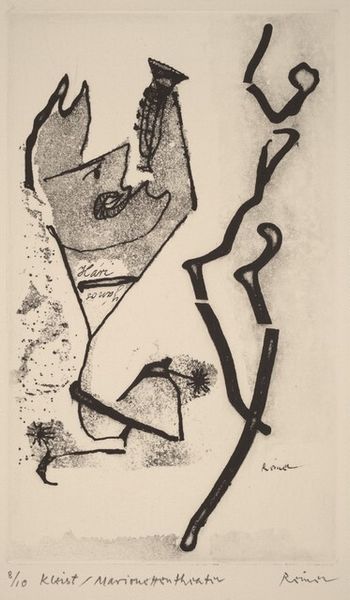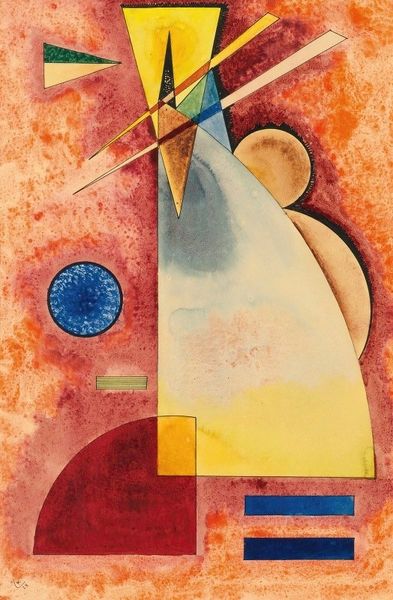
Dimensions: support: 318 x 248 mm
Copyright: CC-BY-NC-ND 4.0 DEED, Photo: Tate
Editor: This is Julio Gonzalez's "Aerial Figure," a drawing of unknown date. It feels like a playful exploration of form, almost like a blueprint for a sculpture. What do you see in this piece, considering Gonzalez's background? Curator: The title itself, "Aerial Figure," points towards a sense of freedom, a break from the constraints of traditional sculpture. Given Gonzalez's work with iron, it's tempting to see this drawing as a precursor to his three-dimensional works. Editor: So the drawing might be a way for him to explore how iron could defy gravity? Curator: Precisely. Remember the historical context – the rise of abstraction, the machine age. Gonzalez was pushing the boundaries, using industrial materials to redefine the human form. The drawing captures that spirit of innovation. Editor: I see it now, it's more than just a sketch; it's a statement. Curator: Indeed, and a testament to the public role of art in reflecting and shaping cultural change.
Comments
Join the conversation
Join millions of artists and users on Artera today and experience the ultimate creative platform.
tate 8 months ago
⋮
González used drawing as a primary way of exploring his ideas. These drawings, made over a six-year period, show how his abstract idiom was rooted in reality and, especially, in the figure. González concentrated on upright structures that, if translated into sculpture, would make use of the strength and balance available from welded iron. This group gives a sense of his inventiveness as he worked towards images with a high emotional charge. Gallery label, August 2004
